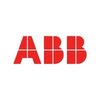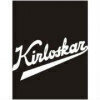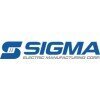Filter interviews by
Wipro Infrastructure Engineering Interview Questions and Answers for Experienced
14 Interview questions
Effective employee handling involves clear communication, support, and fostering a positive work environment.
Establish open communication channels to encourage feedback and concerns.
Provide regular training on EHS protocols to ensure safety awareness.
Implement a recognition program to reward employees for safe practices.
Conduct regular safety audits and involve employees in the process.
Create a supportive environm...
Six Sigma is a data-driven methodology used to improve business processes by reducing defects and variability.
Six Sigma aims to achieve a level of quality where the probability of defects is extremely low.
It involves a structured approach to problem-solving using statistical analysis.
The methodology uses a set of tools and techniques such as DMAIC (Define, Measure, Analyze, Improve, Control) and statistical proces...
There are several types of welding including MIG, TIG, Stick, and Flux-Cored welding.
MIG welding uses a wire electrode and a shielding gas to join two pieces of metal together.
TIG welding uses a tungsten electrode and a filler metal to create a strong weld.
Stick welding uses a consumable electrode coated in flux to create a strong bond.
Flux-Cored welding uses a wire electrode with a flux core to create a protectiv...
1st angle projection is used in Europe & 3rd angle projection is used in North America. They differ in placement of views.
1st angle projection places the object in front of the viewing plane while 3rd angle projection places the object behind the viewing plane.
In 1st angle projection, the top view is placed below the front view while in 3rd angle projection, the top view is placed above the front view.
1st angle pr...
PPAP (Production Part Approval Process) includes elements such as documentation, design records, control plans, measurement systems, and sample parts.
Documentation: PPAP requires the submission of various documents like control plans, process flow diagrams, and FMEA (Failure Mode and Effects Analysis).
Design Records: PPAP includes the submission of design records such as engineering drawings, specifications, and m...
APQP (Advanced Product Quality Planning) advantages include improved product quality, reduced costs, and enhanced customer satisfaction.
APQP helps in identifying and addressing potential quality issues early in the product development process.
It ensures that all necessary steps are taken to meet customer requirements and expectations.
APQP promotes cross-functional collaboration and communication, leading to better...
The 7 QC tools are a set of problem-solving techniques used to identify and solve quality-related issues in an organization.
The 7 QC tools include: Pareto Chart, Cause and Effect Diagram, Check Sheet, Histogram, Scatter Diagram, Control Chart, and Flowchart.
These tools help in analyzing data, identifying root causes of problems, and making data-driven decisions.
By using the 7 QC tools, organizations can improve th...
Change and Release Management involves managing the lifecycle of changes and releases, with KPIs to measure success and challenges to overcome.
Change Management involves assessing and approving changes to systems or processes, while Release Management involves planning and executing the release of those changes.
The lifecycle of Change Management includes identifying the need for a change, assessing the impact and ...
Handle instruments are tools used for gripping and manipulating objects. LC stands for Liquid Chromatography, a technique used for separating and analyzing mixtures.
Handle instruments are designed with a grip or handle for ease of use.
They are commonly used in various industries such as manufacturing, construction, and healthcare.
Examples of handle instruments include pliers, wrenches, screwdrivers, and forceps.
LC...
Fluid mechanics is the study of fluids in motion and at rest, including their properties and behavior.
Fluid mechanics deals with the study of fluids, which can be either liquids or gases.
It involves understanding how fluids behave under various conditions, such as flow, pressure, and temperature.
Key concepts in fluid mechanics include viscosity, turbulence, and Bernoulli's principle.
Applications of fluid mechanics...
Wipro Infrastructure Engineering Interview Experiences for Experienced
23 interviews found
I applied via Recruitment Consulltant and was interviewed in Feb 2024. There were 2 interview rounds.
(2 Questions)
- Q1. Working on esg overall
- Q2. Safety work cukture
(2 Questions)
- Q1. Ehs function in current plant
- Ans.
EHS function in current plant involves ensuring compliance with environmental, health, and safety regulations to protect employees and the environment.
Implementing and enforcing safety protocols and procedures
Conducting regular safety audits and inspections
Providing safety training to employees
Managing hazardous waste disposal
Investigating and addressing safety incidents
Collaborating with regulatory agencies
Developing ...
- Q2. How tonhandle.employees
- Ans.
Effective employee handling involves clear communication, support, and fostering a positive work environment.
Establish open communication channels to encourage feedback and concerns.
Provide regular training on EHS protocols to ensure safety awareness.
Implement a recognition program to reward employees for safe practices.
Conduct regular safety audits and involve employees in the process.
Create a supportive environment w...
Interview Preparation Tips
They are taking interview till final round & after selection HR Will give you verbal offer & They will hold you by saying you are selected & our system is taking time . After that they will release a new requirement at junior level or they will try for internal transfer of employees . After waiting 1 month when you will ask about the offer they will tell you that we will take more time so, that you can search or go if you have opportunity.
All these experience I faced at Jaipur location . No value of plant HR commitment. When you think you got selected here please keep a 2nd offer with you.
I appeared for an interview before Mar 2024, where I was asked the following questions.
- Q1. About your experience and product knowledge
- Q2. About yor communication skills and travelling experience and from this interviewer see your knowledge and confidence skills
Interview Preparation Tips
I applied via Campus Placement and was interviewed before Jun 2023. There were 2 interview rounds.
Basics of engineering and aptitude
(3 Questions)
- Q1. Metallurgy carbon diagrams
- Q2. Fluid mechanics wht all i know
- Ans.
Fluid mechanics is the study of fluids in motion and at rest, including their properties and behavior.
Fluid mechanics deals with the study of fluids, which can be either liquids or gases.
It involves understanding how fluids behave under various conditions, such as flow, pressure, and temperature.
Key concepts in fluid mechanics include viscosity, turbulence, and Bernoulli's principle.
Applications of fluid mechanics can ...
- Q3. Viscosity questions
Interview Preparation Tips
I applied via LinkedIn and was interviewed in Jun 2022. There were 4 interview rounds.

(1 Question)
- Q1. How Release and Change Management works? The lifecycle of Change and Release Management? The KPI's of Change and Release Management? The challenges faced during tenure and how did you overcome with it? The...
- Ans.
Change and Release Management involves managing the lifecycle of changes and releases, with KPIs to measure success and challenges to overcome.
Change Management involves assessing and approving changes to systems or processes, while Release Management involves planning and executing the release of those changes.
The lifecycle of Change Management includes identifying the need for a change, assessing the impact and risk,...
(1 Question)
- Q1. Management questions like what challenges have faced? If you can work on other ITIL skills as well? Where can you see yourself in next few years?
(1 Question)
- Q1. Education and Experience details and salary discussions
Interview Preparation Tips
I applied via Referral and was interviewed before Jun 2023. There was 1 interview round.
(3 Questions)
- Q1. Knowledge on gdt
- Q2. Hydraulic circuit
- Q3. Working principle
- Ans.
The working principle refers to the fundamental concept or theory behind how a project or system operates.
It outlines the core ideas and mechanisms that drive the project forward
Understanding the working principle is crucial for effective project management and troubleshooting
Examples include Agile methodology for software development, Six Sigma for process improvement
Interview Preparation Tips
I applied via Walk-in and was interviewed before Nov 2022. There were 3 interview rounds.

(2 Questions)
- Q1. What is your personal experience?
- Q2. Can you confirm work for rotating shift
(3 Questions)
- Q1. Tell your personal information
- Ans.
my name is pournima gaikwad ,i have been experience of wipro company for 3 years
- Q2. What is your education?
- Q3. Why do you work in this wipro company?
I applied via Company Website and was interviewed before Mar 2022. There were 5 interview rounds.

(3 Questions)
- Q1. Proposal for infrastructure engineering profile has to be screened before providing job
- Q2. Infrastructure experience with prior knowledge
- Ans.
I have extensive infrastructure experience and prior knowledge in various technologies.
I have worked with virtualization technologies such as VMware and Hyper-V.
I have experience with cloud platforms such as AWS and Azure.
I am familiar with networking technologies such as TCP/IP, DNS, DHCP, and VLANs.
I have worked with storage technologies such as SAN and NAS.
I have experience with configuration management tools such a...
- Q3. Technical discussion on resume and knowledge in domain
(1 Question)
- Q1. Case and assignment study in technical knowledge in building infrastructure
Case study on building new infrastructure for existing legacy infrastructure
(1 Question)
- Q1. HR discussion on the interview on infrastructure and salary discussion
Interview Preparation Tips

(1 Question)
- Q1. Technical round and hr round
Interview Preparation Tips
I applied via Naukri.com and was interviewed in Sep 2021. There were 3 interview rounds.
Interview Questionnaire
2 Questions
- Q1. About previous experience
- Q2. Previous experience
- Ans.
I have over 8 years of experience in software development, focusing on scalable systems and team leadership.
Led a team of 5 engineers in developing a microservices architecture for a healthcare application, improving scalability by 30%.
Implemented CI/CD pipelines that reduced deployment time from hours to minutes, enhancing team productivity.
Worked on a project that integrated machine learning algorithms to analyze pat...
Interview Preparation Tips
I applied via Walk-in and was interviewed in Sep 2021. There was 1 interview round.
Interview Questionnaire
2 Questions
- Q1. What is your nam?
- Q2. What is your qualifications
Interview Preparation Tips
Top trending discussions






Wipro Infrastructure Engineering Interview FAQs
Some of the top questions asked at the Wipro Infrastructure Engineering interview for experienced candidates -
The duration of Wipro Infrastructure Engineering interview process can vary, but typically it takes about less than 2 weeks to complete.
Tell us how to improve this page.
Wipro Infrastructure Engineering Interviews By Designations
- Wipro Infrastructure Engineering Operations Trainee Interview Questions
- Wipro Infrastructure Engineering Senior Engineer Interview Questions
- Wipro Infrastructure Engineering Software Engineer Interview Questions
- Wipro Infrastructure Engineering Assistant Manager Interview Questions
- Wipro Infrastructure Engineering Electronics Engineer Interview Questions
- Wipro Infrastructure Engineering Senior Production Engineer Interview Questions
- Wipro Infrastructure Engineering Project Manager Interview Questions
- Wipro Infrastructure Engineering Accountant Interview Questions
- Show more
Interview Questions for Popular Designations
- Associate Interview Questions
- Software Engineer Interview Questions
- Software Developer Interview Questions
- Sales Executive Interview Questions
- Associate Software Engineer Interview Questions
- Data Analyst Interview Questions
- System Engineer Interview Questions
- Sales Officer Interview Questions
- Show more
Overall Interview Experience Rating
based on 7 interview experiences
Difficulty level
Duration
Interview Questions from Similar Companies
Wipro Infrastructure Engineering Reviews and Ratings
based on 698 reviews
Rating in categories
|
Assistant Manager
112
salaries
| ₹6.2 L/yr - ₹14.5 L/yr |
|
Senior Engineer
99
salaries
| ₹4.4 L/yr - ₹9 L/yr |
|
Trainee
89
salaries
| ₹1.2 L/yr - ₹2.5 L/yr |
|
Quality Engineer
62
salaries
| ₹1.5 L/yr - ₹4.7 L/yr |
|
Team Member
58
salaries
| ₹3.2 L/yr - ₹4.6 L/yr |

Thermax Limited

Cummins

ABB

CNH ( Case New Holland)
- Home >
- Interviews >
- Wipro Infrastructure Engineering Interview Questions >
- Wipro Infrastructure Engineering Interview Questions for Experienced













